Ah, Montana, is the perfect place to experience the beauty of nature, and speaking of nature’s beauty, have you ever seen the Montana state flower?
Known as bitterroot, this elegant flower is a low-growing perennial plant that blooms with deep pink, exquisite flowers in the dry, gravelly, and sandy soils of Montana.
As a Montana-based travel blogger and flower lover, let me tell you a thing or two about this precious state flower that will make you excited for your next trip to the Big Sky Country.
In this article, I’ll be discussing everything you need to know about the Montana state flower and why it’s worth your attention.
- Related article: Montana State Insignias
From its Indian heritage to its enchanting characteristics, I’m confident that by the end of this article, you’ll be in awe of the charming beauty of bitterroot flowers.
So, buckle up, and let’s explore Montana’s deserving state flower.
Montana State Flower Origins
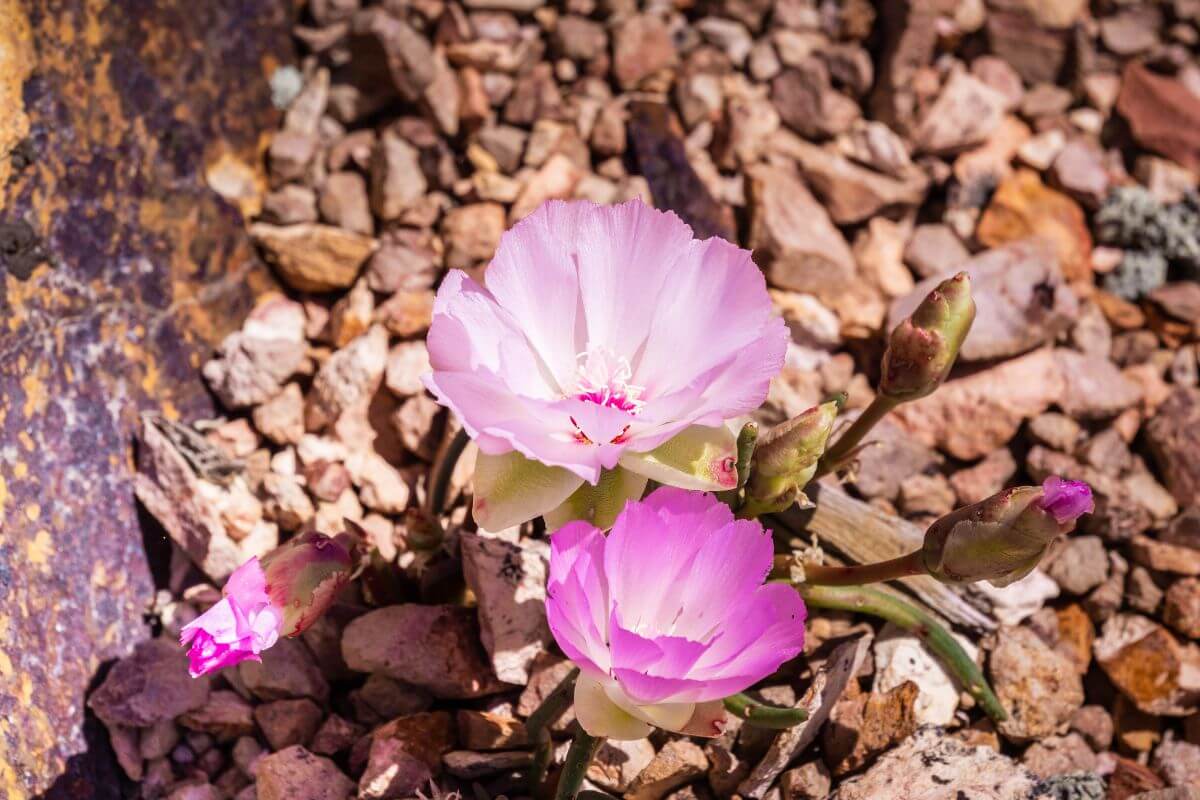
The Bitterroot (Lewisia rediviva) is the official state flower of Montana and is highly valued for its cultural and historical significance.
It had become a Montana icon long before it was voted as Montana’s state flower and its prized label was more of a historical choice.
In 1805, Meriwether Lewis and William Clark “discovered” the plant in a western Montana valley that now bears its name, Bitterroot Valley. This happened during one of their expeditions.
Historically, bitterroot is a culturally significant plant for several Native American tribes in the West, including Flathead, Kootenai, Nez Perce, Paiute, Shoshoni, and others. They considered the bitterroot as an essential part of their diet.
In fact, tribes timed their spring migrations with the blooming of this plant on the gravel river bars and hillsides.
They would dig, clean, and dry the root of this plant and include it as part of their meals. It is seldom eaten raw, however, due to its bitter taste and swelling aftermaths that cause great discomfort to anyone who consumes it.
Traditionally, the roots of the plant are boiled and mixed with meat or berries to hide their bitter taste. The bitterroot easily became a winter staple because it was a good source of starch and carbohydrates.
The root also served as an item of barter and exchange. Highly valued at a substantial price, one sack of it can be equivalent to a horse.
What Is the Bitterroot Plant?
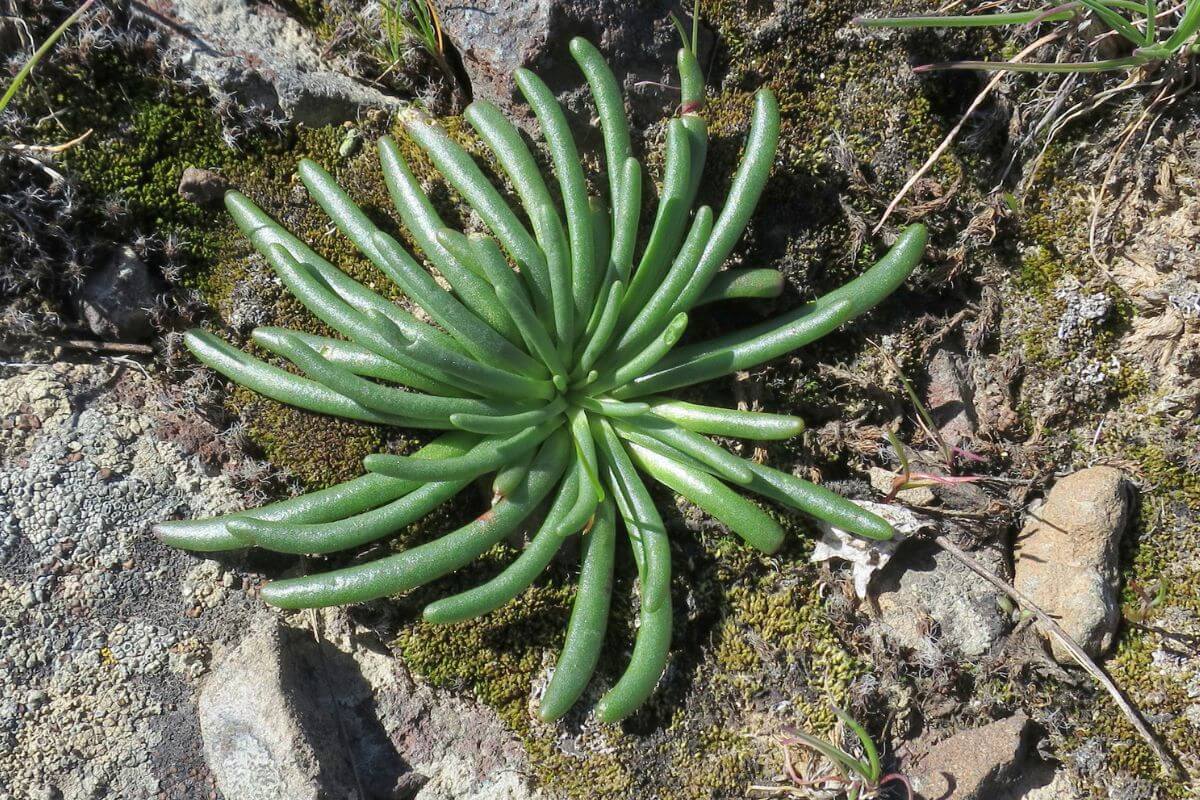
The bitterroot or Lewisia Rediviva, is a small perennial plant that thrives in dry soils and requires full sun exposure to grow properly. It often has fleshy leaves and sometimes forms rosettes at the base of the plant.
The bitterroot is native to western North America, including Montana, and is often found in valleys and mountain ranges.
The bitterroot is a beautiful plant with striking, multi-petaled flowers that bloom in the spring and summer. The plant produces many stems, each with a single flower that ranges in color from white to pink to purple.
Bitterroot flowers have 10-19 petals, each 2-2.5cm long, with 6-8 sepals behind them. Sepals are in fact leaves but often resemble the petals in likeness.
Additionally, the flowers open with the morning sun and close again at night, growing close to the ground to minimize exposure to wind and preserve energy.
The bitterroot plant also has a branched base and tuberous roots.
In addition to its cultural and historical significance, the bitterroot has charming flowers that are deserving of being the state flower of Montana.
Speaking of its appearance and color, you may also encounter thistles in Montana that also have white to pink flowers. But unlike the Bitterroot, these thistles are known to be invasive species of plants.
Bitterroot Fun Fact
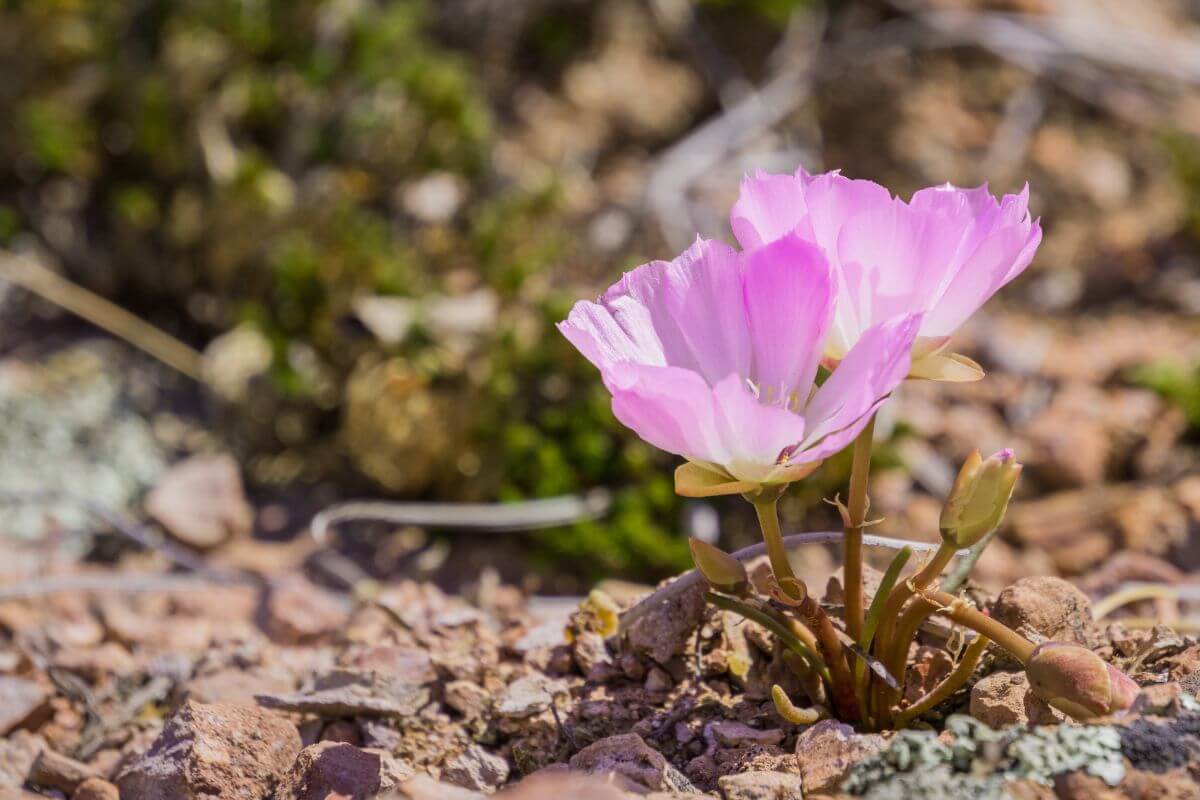
A fun fact about Montana’s state flower, the bitterroot, is that it is also known as the “Resurrection Flower.”
This is because it is able to survive long periods of drought, with its roots appearing dead, and then return to life once water is reintroduced. Their roots are very long-lived.
The bitterroot’s ability to survive drought is due to its fleshy taproots which can store nutrients and water long enough to endure harsh conditions and still remain strong.
This plant’s ability to survive difficult conditions is reflective of its resilience and this is what Montanans want their state to represent.
Montana State Flower History
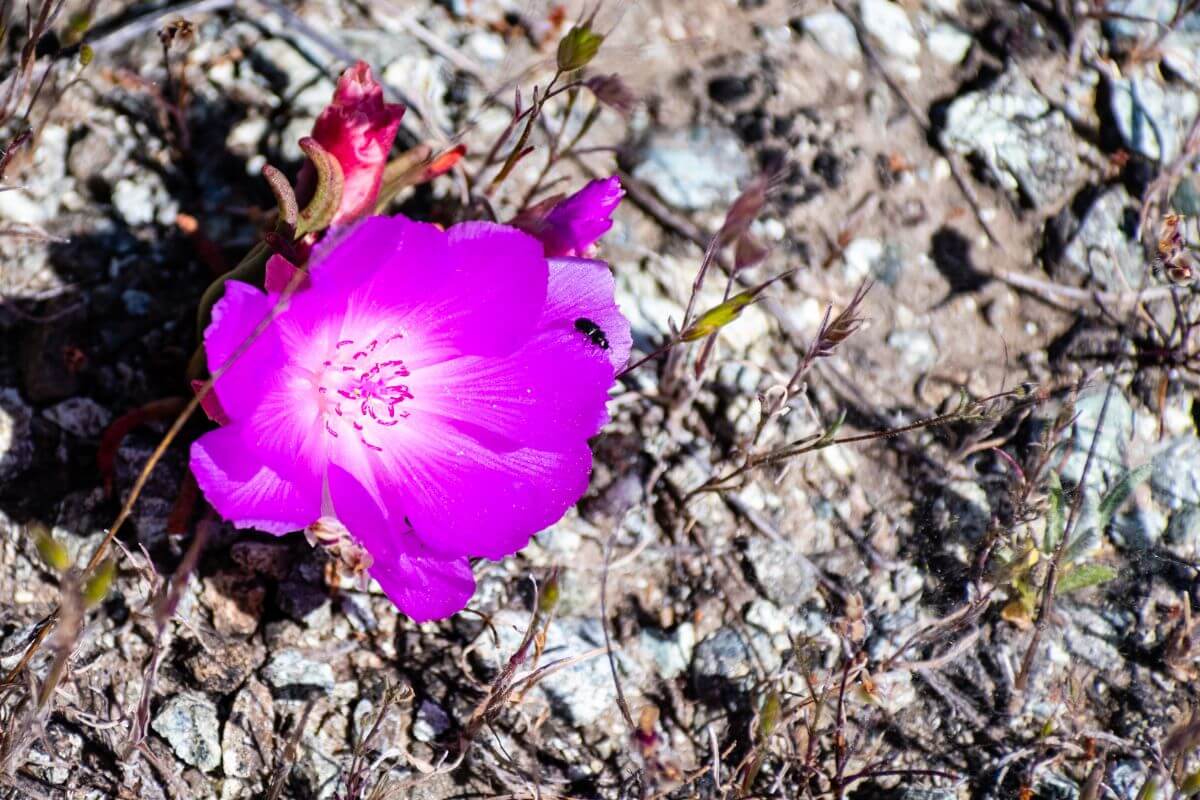
During the 1893 Columbia Exposition, Butte residents used the bitterroot as the central figure on a large silver shield.
That same year, Mrs. Mary Long Alderson of Bozeman began efforts to secure legislative designation for the bitterroot as Montana’s state flower. She was the heart of the state flower movement in Montana.
Inspired by the bitterroot’s resilience and role in Montana’s history, Alderson formed and headed Montana’s Floral Emblem Association in January of 1894.
The association set a state-wide referendum for the fall. Ballots sent to interested registrants had to be completed and returned by September 1, 1894.
Montana’s press joined in the effort. When the polls closed, 5,857 ballots were in. More than 32 separate flowers received votes.
The winner was the bitterroot with 3,621 votes, followed by the evening primrose with 787 votes, and the wild rose with 668 votes.
At Mrs. Alderson’s urging, the 1895 Legislature responded to public preference and named the bitterroot as Montana’s state flower.
Not long after, the delicate petals of the bitterroot graced stationery, posters, silverware, and even special sets of double damask Irish linen.
Today, the bitterroot serves as a reminder of Montana’s rich history and important natural resources.
Efforts to protect it and other native plants continue to be made, ensuring that the bitterroot remains a symbol of the state’s past and future.
Montana State Flower Bitterroot Final Thoughts
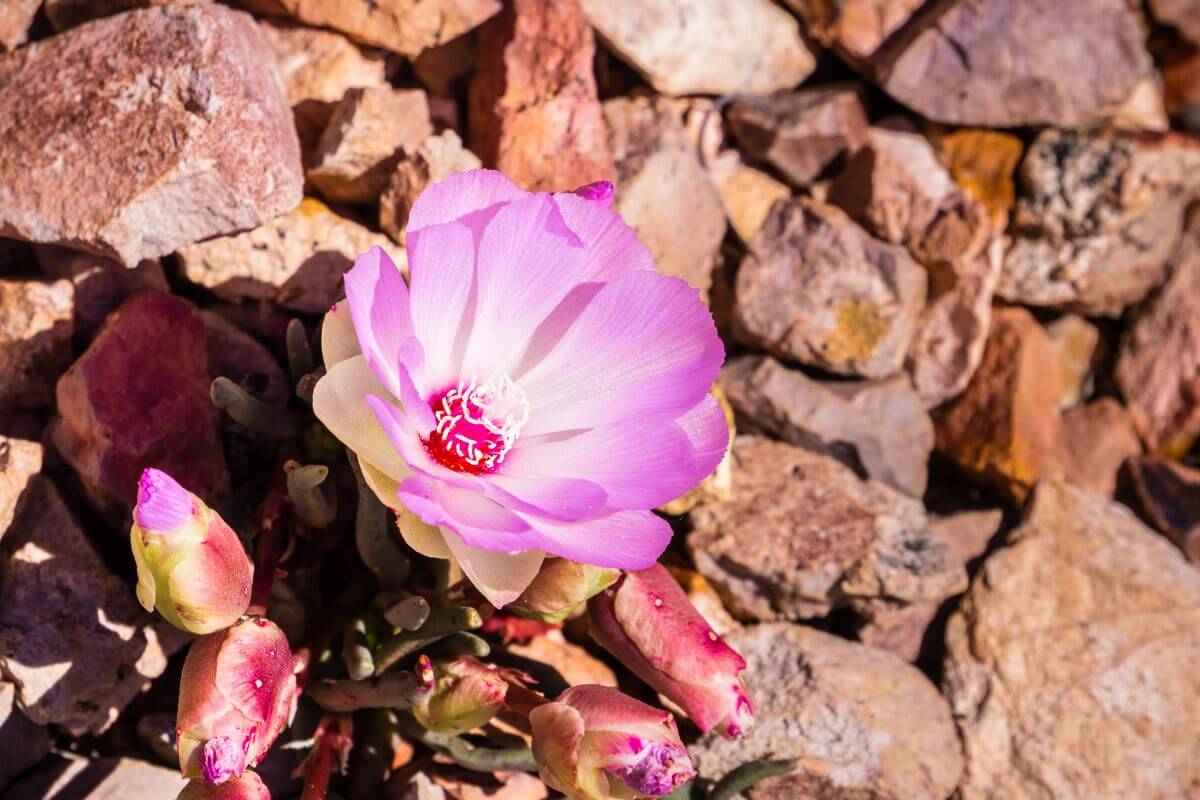
The Bitterroot holds great significance not just as Montana’s official state flower, but also due to its ties with the state’s Indian heritage.
Its low-growing perennial plant structure, along with beautiful flower petals, has contributed a striking charm to Montana’s valleys and mountain ranges since.
Besides its aesthetic appeal, Bitterroot is also ecologically significant, with its deep roots playing a crucial role in the ecosystem and Montana’s native plant diversity.
Montana’s history and culture are imbibed with Bitterroot’s presence, and the flower’s precious pink blossoms remain a charming sight during spring migrations.
Montana State Flower Bitterroot FAQs
Let’s answer some common FAQs about Montana’s state flower, including why it holds such importance, and whether or not it’s illegal to pick.
1. What Is Montana’s Famous Flower?
Montana’s famous flower is the bitterroot, a low-growing perennial plant that produces beautiful deep pink blossoms.
It held significant historical importance to Native Americans back then when they turned to its roots for food and gained more attention through Mary Long Alderson in 1893.
To this day, Montanans still hold this precious flower dear to their hearts.
2. Is It Illegal to Pick Bitterroot in Montana?
Yes, it is illegal to pick Bitterroot in Montana. Disobeying this law is considered an “illegal removal of a valuable resource from state lands”.
Violations can result in a civil penalty of up to $1,000 for each day of violation.
3. Why Is Bitterroot Montana’s State Flower?
Bitterroot is Montana’s state flower, chosen because of its deep symbolic and cultural significance to the state and its people.
This exquisite plant with a beautiful purplish-pink flower is known for its nutritious root, which has long been used by Native Americans as a food source.
Also, its ability to bloom again after being dried is a display of resilience that is reflective of the Montanans.
Discover more about Montana and check out these other articles that might also interest you:

